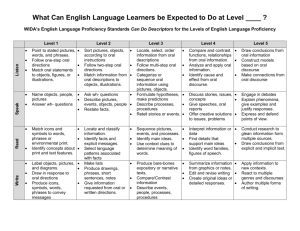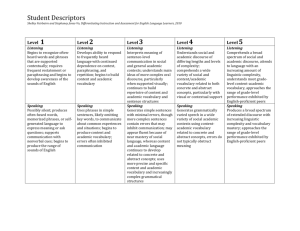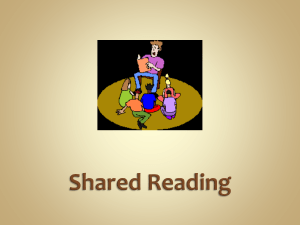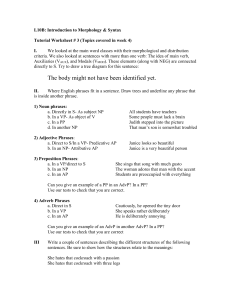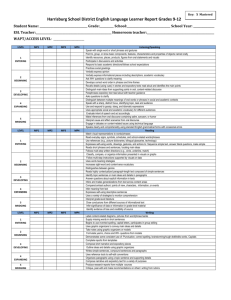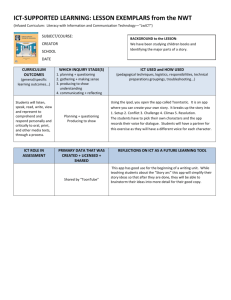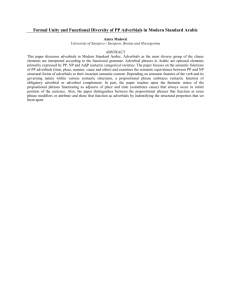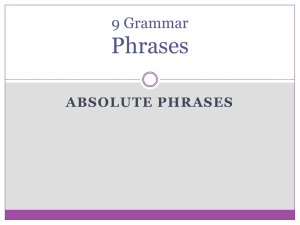Language Functions Strips June21
advertisement
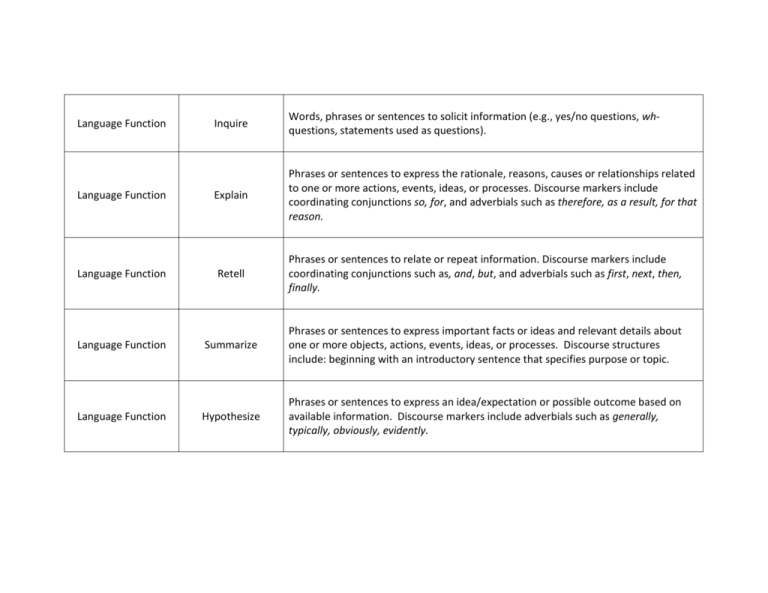
Inquire Words, phrases or sentences to solicit information (e.g., yes/no questions, whquestions, statements used as questions). Explain Phrases or sentences to express the rationale, reasons, causes or relationships related to one or more actions, events, ideas, or processes. Discourse markers include coordinating conjunctions so, for, and adverbials such as therefore, as a result, for that reason. Language Function Retell Phrases or sentences to relate or repeat information. Discourse markers include coordinating conjunctions such as, and, but, and adverbials such as first, next, then, finally. Language Function Summarize Phrases or sentences to express important facts or ideas and relevant details about one or more objects, actions, events, ideas, or processes. Discourse structures include: beginning with an introductory sentence that specifies purpose or topic. Hypothesize Phrases or sentences to express an idea/expectation or possible outcome based on available information. Discourse markers include adverbials such as generally, typically, obviously, evidently. Language Function Language Function Language Function Argue Phrases and sentences to present a point of view with the intent of communicating or supporting a particular position or conviction. Discourse structures include expressions such as in my opinion, it seems to me, and adverbials such as since, because, although, however. Language Function Synthesize Phrases or sentences to express, describe, or explain relationships among two or more ideas. Relationship verbs such as contain, entail, consist of, partitives such as a part of, a segment of, and quantifiers such as some, a good number of, almost all, a few, hardly any often are used. Language Function Identify Language Function A word or phrase to name an object, action, event, idea, fact, problem, need, or process.
